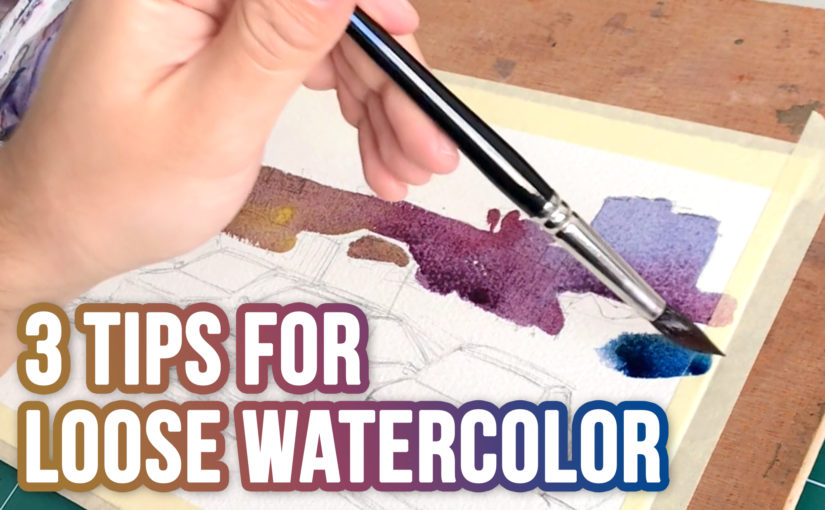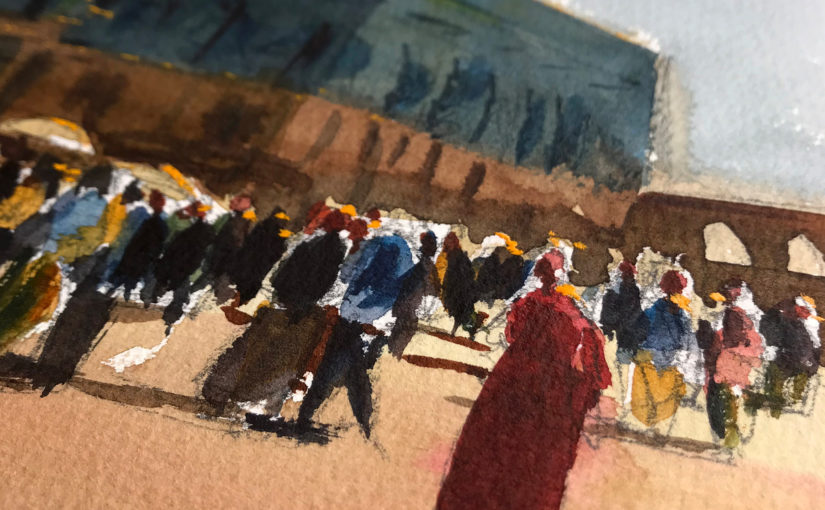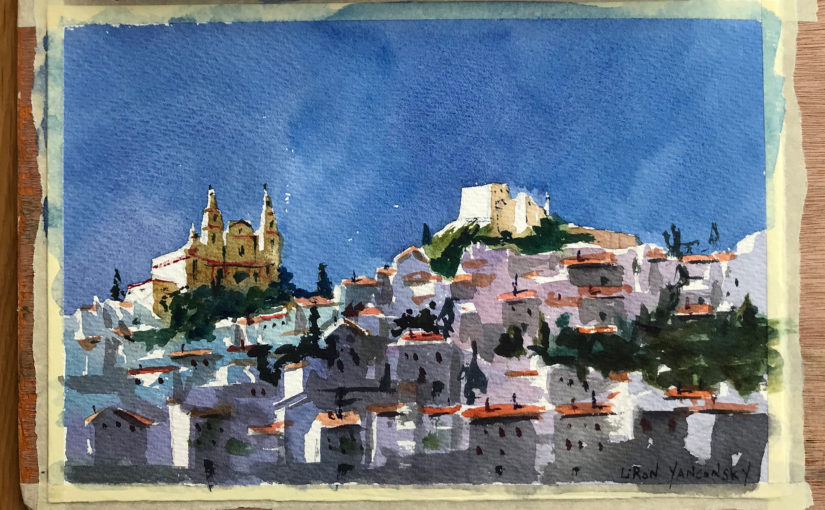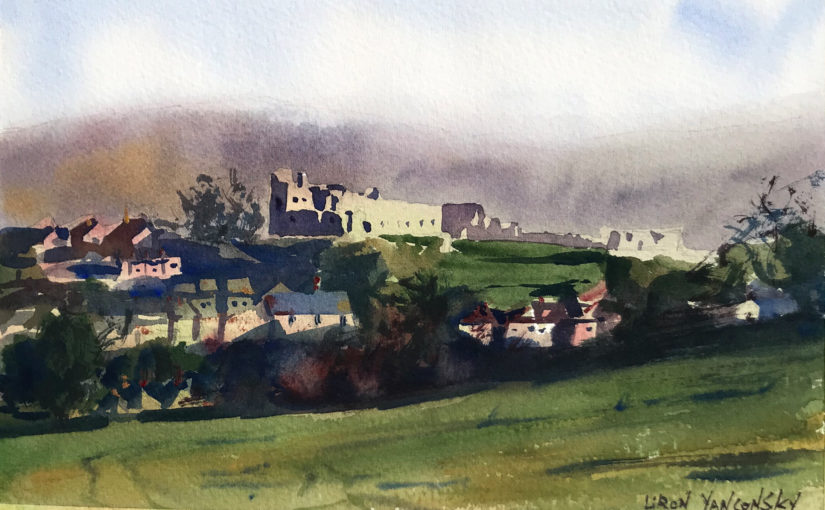Podcast: Play in new window | Download
Today we’ll talk about how to let go, enjoy watercolor, paint loosely and get the results you want!
This episode features audio from my YouTube video on that same topic. You can watch the full vid here:
3 Tips For Loose Watercolor – Summary
1. Small Paper & Large Brush.
This allows you to have more control. A smaller paper is more forgiving, as you don’t need to fill in huge areas and have perfect control over watercolor, and getting an even wash.
On the other hand, the large brush also forces you to give up some of your control, and learn how to PAINT rather than “color” inside the lines.
With that being said, make sure you use a brush with a good tip for those tighter spots.
2. Magic Wand Grip.
Hold the brush at the very back, far from the hairs. This again forces you to give up some control and loosen up, but it also provides you with more control when it comes to the range of motion.
I like to call this the “Magic Wand” grip. I do this whenever possible, and hold the brush closer to the hairs only when I’m working on very fine details.
3. Use Pure Paints.
Instead of mixing and possible over-mixing your paints – try using them purely. This saves you time, and the result is beautiful.
When I got started in watercolor I tended to REALLY over-mix my paint in the palette, so I would always get muted, grayed out paintings.
The cure for this – NOT MIXING at all – turned out to be something I really enjoy doing. And so I’ve been doing that ever since.
I hope you found these tips useful!
Reach Out to Me
Got any questions? Want help with your paintings? Feel free to reach out to me in any of the platforms I’m on, and I’ll be happy to help (:
YouTube – Liron Yanconsky Art
LinkedIn – Liron Yanconsky
Pinterest – Liron Yanconsky
Instagram – @LironYanIL
Twitter – @LironYan





